 BACK TO GALLERY
BACK TO GALLERY
Daniel Crouch Rare Books
Maximilian Alexander Philip, Prince zu WIED-NEUWIED
Reise in das Innere Nord-America.
Bodmer's aquatints are one of the most significant contributions to Western Frontier iconography.
Atlas volume: 330 x 485mm. Quarto volumes: 330 x 280mm.
description
First edition, and an early issue, with most of the plates in their first state, of one of the most magnificent, yet sympathetic, and accurate depictions of the Plains Indians, just a few years before the population was decimated by a smallpox epidemic, brought by white traders and trappers, that virtually destroyed their culture.
"Bodmer produced nearly 400 watercolors and sketches, mostly North American landscapes but also numerous American Indian portraits, in which he achieved a level of accuracy and sensitivity that no other artist of the American frontier has ever surpassed... It is a great irony that Bodmer had no previous experience in portraiture. Yet his lack of training proved an advantage: he applied no European ideals of form or beauty to his portraits, conventions that might have distorted his work" (Orr).
"...in his careful observations and hundreds of vivid and exotic watercolours and sketches Bodmer created, he possessed a priceless cache of ethnographic and historical information that would add much to the scientific literature about North America, and he set about producing one of the last of the great illustrated books of the Enlightenment as well as a thoroughly romantic document of his North American expedition" (Tyler).
The explorers
Prince Maximilian (1782-1867) was a student of natural history and had studied under the same tutor as another great scientist, Alexander von Humboldt. Their field of study was anthropology and how the spread of humans around the globe had led to so many different races. Maximilian’s trip was to attempt to answer some of those questions. A veteran of the Napoleonic Wars he had already travelled to the Brazilian jungle 1815-17. The prints accompany that work were derided and for his travels to America he wrote “I would want to bring along a draftsman who would not be too much of a burden on my pocketbook, a landscape painter but also able to depict figures correctly and accurately, especially the Indians”. Maximilian met the young Karl Bodmer (1809-93) in January 1832, and after agreeing to the voyage they departed in May of the same year.
Arriving in Boston they made their way to St. Louis by April 1833, from where they headed up the Missouri in the Yellow Stone, an American Fur Company steamboat which had carried George Catlin the previous year. The region was little known at the time. After a dreadful return journey, they reached St. Louis on 16 July 1834, Maximilian suffering badly from scurvy. Maximilian had lost much of his natural history and ethnographic material in the explosion of the Assiniboine on the Missouri. However, Bodmer’s more than 400 watercolours and sketches miraculously survived.
Whilst Prince Maximilian returned to Germany to write his account, Karl Bodmer travelled to Paris to prepare his famous aquatint plates from his collection of watercolours. After several years the work was finally ready in 1839 when the first volume of text was published, a second appeared in 1841. Further editions would appear in French 1840-42 and English 1843. The plates for all three editions were printed in Paris and shipped to the various publishers. The German and French editions are considered to have superior colour. Although printed to critical acclaim, various studies of the numbers produced conclude that fewer than 400 were made in total (Tyler).
The finished work would be considered one of the most sympathetic and accurate recordings of the Plains Indians issued just prior to their virtual extinction, within a decade. This was ironically brought about by the very method used to document them in the first place. In ‘The Plains Indians’, the historian Paul H. Carlson states the smallpox outbreak was traced to contact between deckhands of the steamboats of the American Fur Company and the natives. It wiped out more than half the Blackfeet and virtually all the Mandan Indians. The plates include several magnificent portraits of individual warriors, hunting scenes, Indian dances, fine landscapes including the various fur trading forts, and Indian artifacts. There is no other work which comes close to them for not only the accuracy and detail recorded, but for their quality of execution.
Rarity
In recent years, extensive study of the different states of the plates has been undertaken. In this example 41 of the Tableau and 30 of the Vignette plates are first state. Complete sets this work are very rare, the text itself is often lacking and is highly regarded though it has been overshadowed by the plates. Examples in early colour are even rarer. The last to appear at auction was that in the Siebert sale in 1999 which fetched $415,000 (an inferior English edition). The last German edition in full original binding and colour we are aware of changed hands privately in 2005 for $950,000.
"Bodmer produced nearly 400 watercolors and sketches, mostly North American landscapes but also numerous American Indian portraits, in which he achieved a level of accuracy and sensitivity that no other artist of the American frontier has ever surpassed... It is a great irony that Bodmer had no previous experience in portraiture. Yet his lack of training proved an advantage: he applied no European ideals of form or beauty to his portraits, conventions that might have distorted his work" (Orr).
"...in his careful observations and hundreds of vivid and exotic watercolours and sketches Bodmer created, he possessed a priceless cache of ethnographic and historical information that would add much to the scientific literature about North America, and he set about producing one of the last of the great illustrated books of the Enlightenment as well as a thoroughly romantic document of his North American expedition" (Tyler).
The explorers
Prince Maximilian (1782-1867) was a student of natural history and had studied under the same tutor as another great scientist, Alexander von Humboldt. Their field of study was anthropology and how the spread of humans around the globe had led to so many different races. Maximilian’s trip was to attempt to answer some of those questions. A veteran of the Napoleonic Wars he had already travelled to the Brazilian jungle 1815-17. The prints accompany that work were derided and for his travels to America he wrote “I would want to bring along a draftsman who would not be too much of a burden on my pocketbook, a landscape painter but also able to depict figures correctly and accurately, especially the Indians”. Maximilian met the young Karl Bodmer (1809-93) in January 1832, and after agreeing to the voyage they departed in May of the same year.
Arriving in Boston they made their way to St. Louis by April 1833, from where they headed up the Missouri in the Yellow Stone, an American Fur Company steamboat which had carried George Catlin the previous year. The region was little known at the time. After a dreadful return journey, they reached St. Louis on 16 July 1834, Maximilian suffering badly from scurvy. Maximilian had lost much of his natural history and ethnographic material in the explosion of the Assiniboine on the Missouri. However, Bodmer’s more than 400 watercolours and sketches miraculously survived.
Whilst Prince Maximilian returned to Germany to write his account, Karl Bodmer travelled to Paris to prepare his famous aquatint plates from his collection of watercolours. After several years the work was finally ready in 1839 when the first volume of text was published, a second appeared in 1841. Further editions would appear in French 1840-42 and English 1843. The plates for all three editions were printed in Paris and shipped to the various publishers. The German and French editions are considered to have superior colour. Although printed to critical acclaim, various studies of the numbers produced conclude that fewer than 400 were made in total (Tyler).
The finished work would be considered one of the most sympathetic and accurate recordings of the Plains Indians issued just prior to their virtual extinction, within a decade. This was ironically brought about by the very method used to document them in the first place. In ‘The Plains Indians’, the historian Paul H. Carlson states the smallpox outbreak was traced to contact between deckhands of the steamboats of the American Fur Company and the natives. It wiped out more than half the Blackfeet and virtually all the Mandan Indians. The plates include several magnificent portraits of individual warriors, hunting scenes, Indian dances, fine landscapes including the various fur trading forts, and Indian artifacts. There is no other work which comes close to them for not only the accuracy and detail recorded, but for their quality of execution.
Rarity
In recent years, extensive study of the different states of the plates has been undertaken. In this example 41 of the Tableau and 30 of the Vignette plates are first state. Complete sets this work are very rare, the text itself is often lacking and is highly regarded though it has been overshadowed by the plates. Examples in early colour are even rarer. The last to appear at auction was that in the Siebert sale in 1999 which fetched $415,000 (an inferior English edition). The last German edition in full original binding and colour we are aware of changed hands privately in 2005 for $950,000.




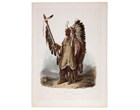
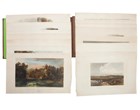
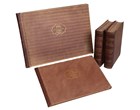

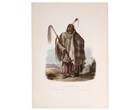
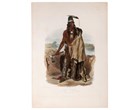

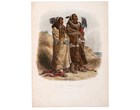
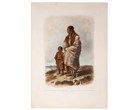
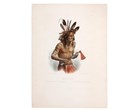
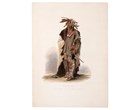
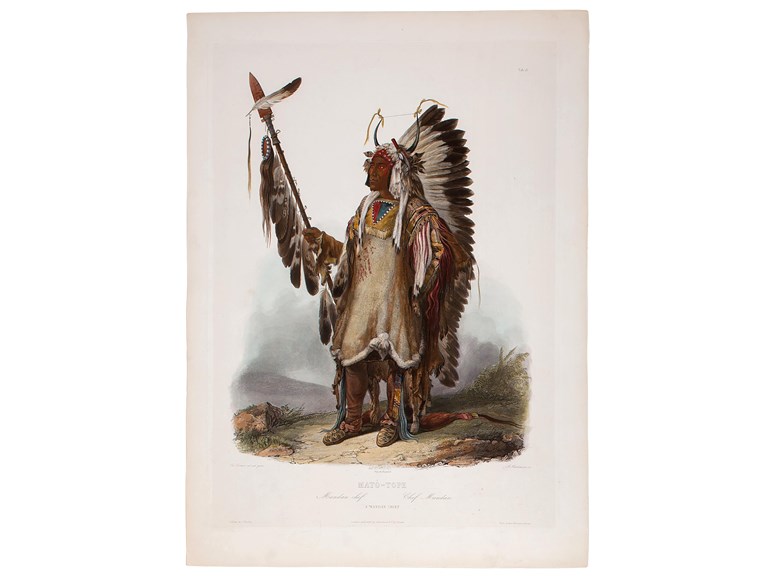
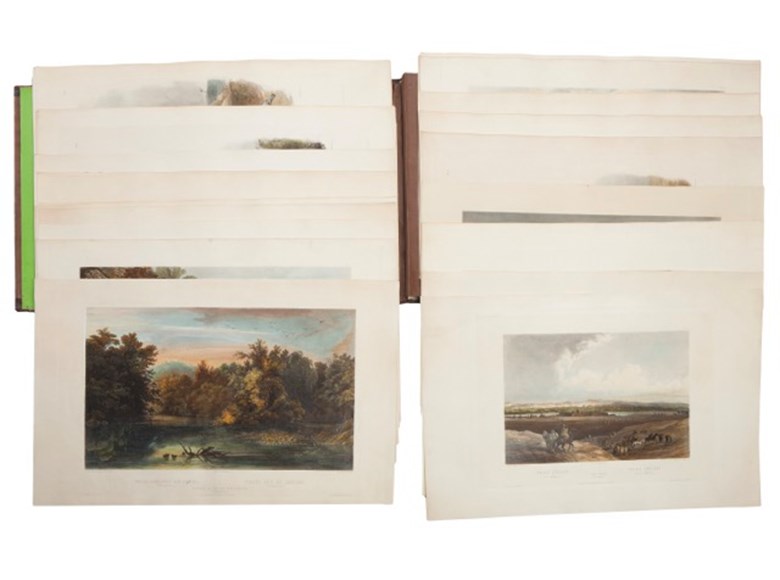

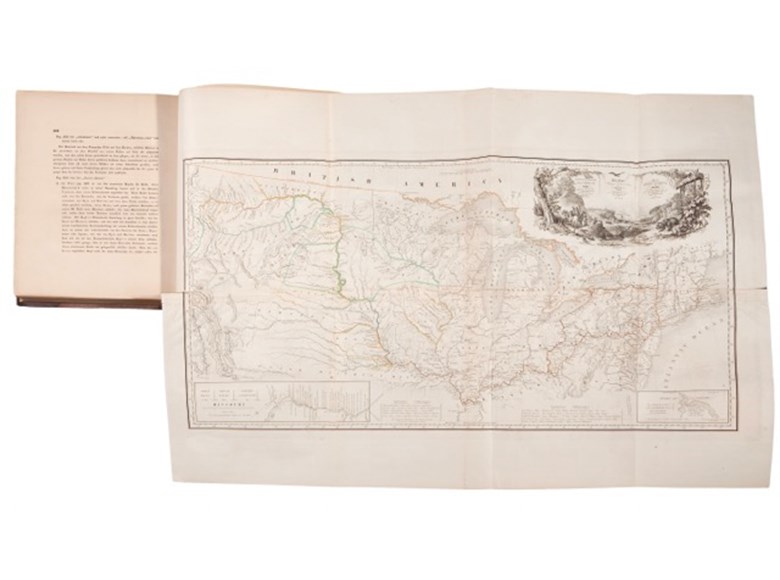
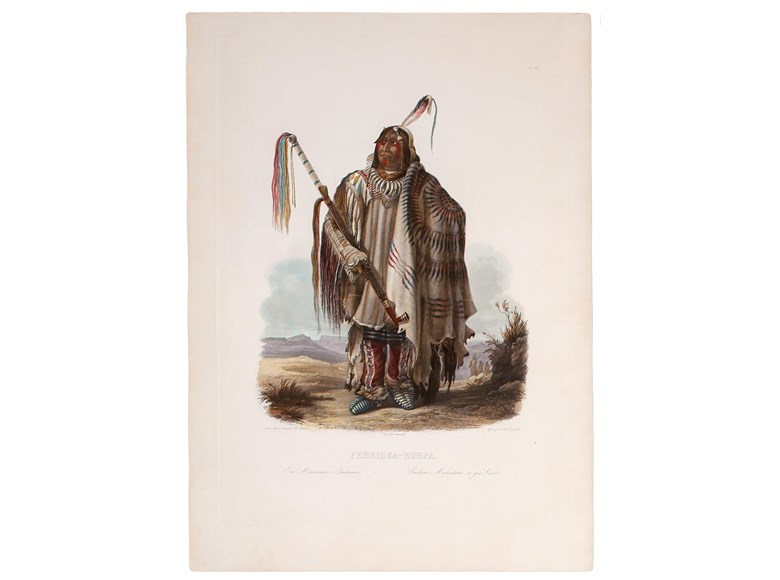
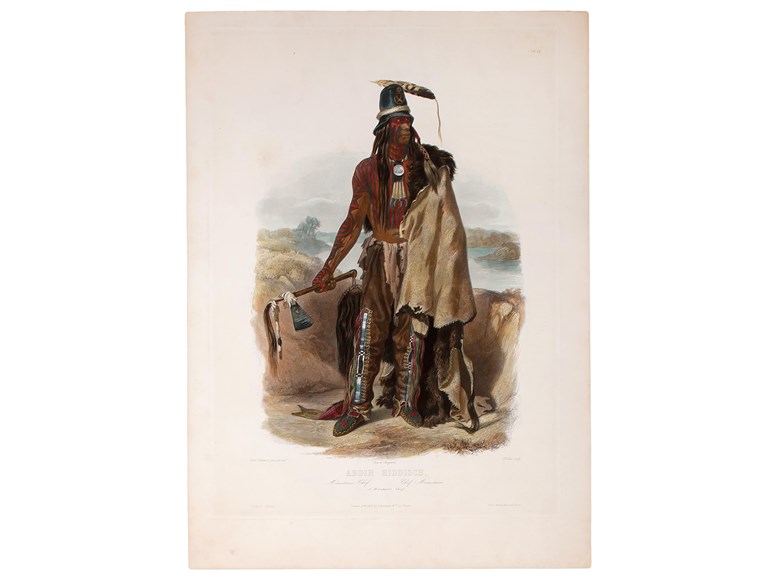

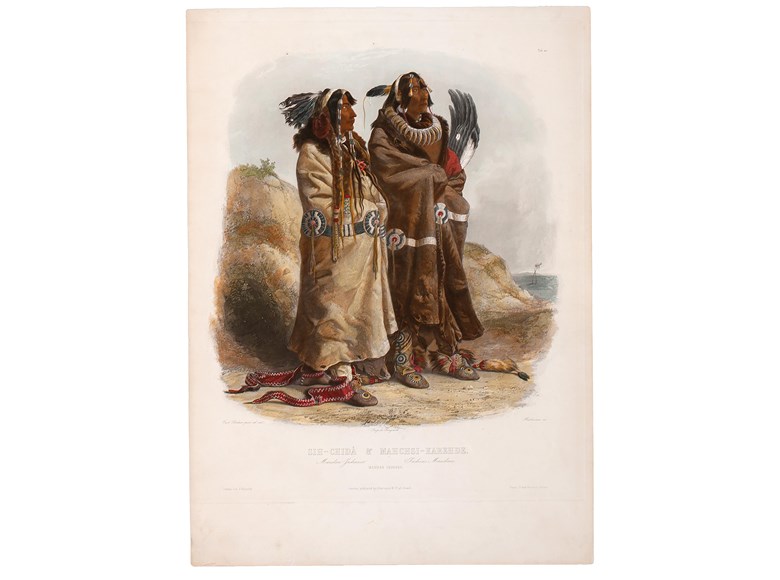
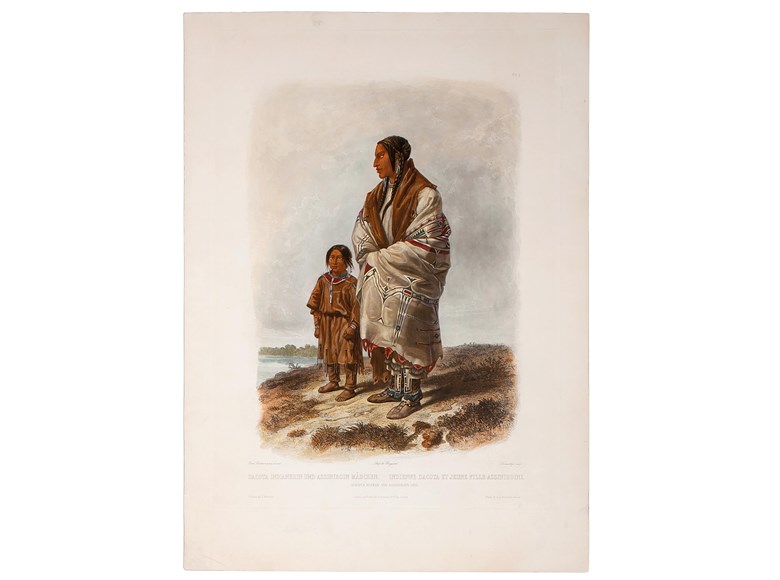
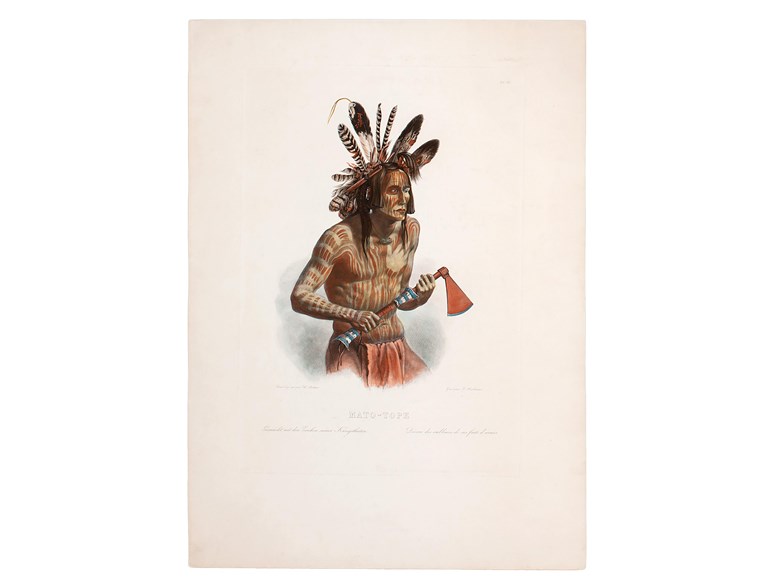
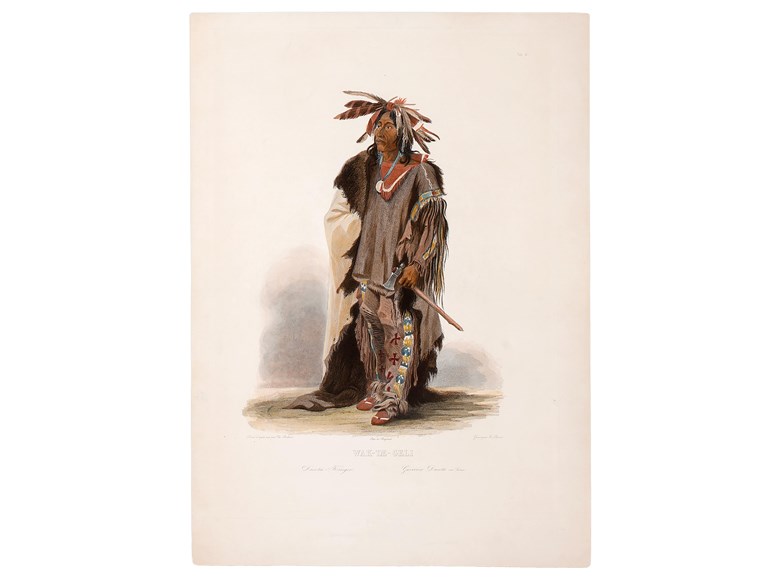
 SEND AN EMAIL
SEND AN EMAIL
 (212) 602 1779
(212) 602 1779